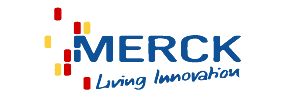Booster
Booster is the model of polymerization and maximization. Polymerized enzymes, different from normal scattered condition, has much more opportunities to contact with the substrates. Therefore, our project aims to increase as well as to control the efficiency of complex reactions. We'll build a framework that make multi-enzyme complex easy to form, which we call a Crown.

And based on the success of the individual fusion protein (The first jewel) expression, we tried to add more jewels on the Crown.
In order to build a polymerase system, we make more fusion proteins bind to the same Connector. Then by adding enzymes, it has the practical effect of accelerating the reactions and enhancing efficiency of the production. So far, the Crown is built with more than one jewel shining on it.
Gearbox

Gearbox is the model of selectivity. Our fused protein can not only be used to polymerize enzymes but also to control selective combinations. As the pathway showed in the picture, we can get different product by combining E1 and E2 together or combining E1 and E3 together. Therefore, we can control the direction of pathway by simply transforming different Connectee plasmid.

All the three enzymes involves are expressed in the bacteria. Each of fused protein contain ssDsbA,Lgt,FL3,enzyme,HL and TAL while the TAL part can recognize three different sites. We design two Connectee plasmids. Connectee1 has TAL recognition sites for E1 and E2 and Connectee2 has recognition sites for E1 and E3. By transforming P1 only into the bacteria, the fused proteins containing E1 and E2 will bind to the plasmid, thus produce S3 efficiently. Analogously, by transforming P2 into the bacteria, we can expect to get higher yield of product S4.
How to be a Craftsmen
A compact machine requires bold ideas and careful practicing. Here comes how we built our Crown.
Construction Method
Above all, we use 3 sets of Connectee1 to build polymerization system. There are four main parts in a Connectee1 for testing.

ssDsbA: SsDsbA is the signal recognition particle (SRP)-dependent signaling sequence of DsbA. SsDsbA-tagged proteins are exported to the periplasm through the SRP pathway. With ssDsbA fused to the N-terminus, fusion proteins with Lgt are expected to be anchored onto inner membrane of E.coli.
FP: To visualize the localization of fusion protein with fluorescence test , we added FP in the Connectee1 and placed it just after the ssDsbA. We chose mRFP,CFP,YFP in our system.
Lgt: Phosphatidylglycerol prolipoprotein diacylglyceryl transferase (Lgt) is an inner membrane protein act as an membrane anchor of E.coli with seven transmembrane segments and has been successfully overexpressed in E. coli without causing harm to cells.
TAL effectors:As mentioned earlier,we choose three kinds of combinations to build three different TAL proteins, which is based on the parts that the team of Freiburg offered in 2012. These three TAL proteins can identify three different 14bp nucleotide sequences on a Connector. Note that we added a His Tag at the end of TAL protein to facilitate separation and purification.
For the three kinds of corresponding Connectee2, we did not introduced ssDsbA-Lgt section to keep them in a free intracellular state.
In the final production of our construction, we add an easy-to-hand interface sequence between the Lgt and TAL protein in Connectee1 or just before the TAL protein in Connectee2, as sites to adding enzymes.

Co-Transformation & Induced Expression
Expression vectors used in the project for membrane protein expression are modified versions of pRSFDuet-1, pETDuet-1,pACYCDuet-1(NOVAGEN), which are originally regulated by T7 promoter. These plasmids can coexist in one cell.
The Connector is pBluescript II KS(+) .

We used the four reformed plasmids to co-transform and induced the Connectors to express. Now the structure of the crown appears in the E.coli cell membrane or cytoplasm. Here we use the fusion proteins with two kinds of enzymes and TAL1 as examples.

Test methods
We use formaldehyde to stabilize the connected fusion proteins and Connector, then separate the proteins-Connector complexes and digest the protein. Finally use PCR to detect the three sequences of the Connector which TAL proteins are designed to bind to.
Then, we can test the yield of different product to determine the efficiency of selective combination.
Application
Based on our design, our project has many application prospects, due to its fundamentality. In prokaryotic systems, enzyme polymerization can be used to regulate various metabolic pathways, such as the example we mentioned above. pykF and poxB are two enzymes involved in pyruvate metabolism. By binding them to the connector, we can improve the reaction efficiency to a great extent. Besides, our project can also be applied in eukaryotic systems, including gene therapy and regulation of stem cell differentiation.
What’s more ?

We are trying to put more enzymes into the polymerization system, which makes the Crown more practical and brilliant. And with more enzymes on the Crown, there will be more possible choices for selective combination.
Reference
- Pailler, Jérémy, et al. "Phosphatidylglycerol:: prolipoprotein diacylglyceryl transferase (Lgt) of Escherichia coli has seven transmembrane segments, and its essential residues are embedded in the membrane." Journal of bacteriology 194.9 (2012): 2142-2151.
- Schierle, Clark F., et al. "The DsbA signal sequence directs efficient, cotranslational export of passenger proteins to the Escherichia coli periplasm via the signal recognition particle pathway." Journal of bacteriology 185.19 (2003): 5706-5713.
- Katsuyama, Tomonori, et al. "An efficient strategy for TALEN-mediated genome engineering in Drosophila." Nucleic acids research 41.17 (2013): e163-e163.
- Bogdanove, Adam J., Sebastian Schornack, and Thomas Lahaye. "TAL effectors: finding plant genes for disease and defense." Current opinion in plant biology 13.4 (2010): 394-401.
 "
"







